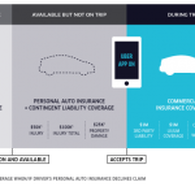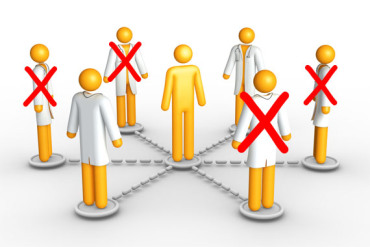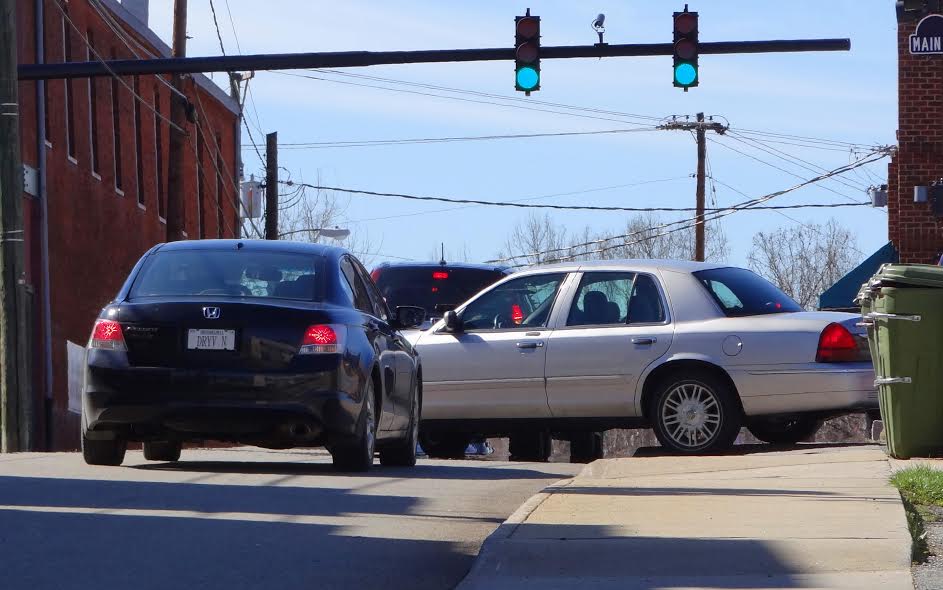The study labeled 11 percent of plans “extra small” because they covered fewer than 10 percent of physicians in a plan’s region. Another 30 percent were “small,” meaning they covered between 10 and 25 percent of physicians. Just 11 percent of plans were classified as “extra large” because they covered at least 60 percent of physicians in the area.
|
If the physician networks for plans sold on the health law’s online insurance exchanges were T-shirts, more than 40 percent would be size X-small or small. That’s the takeaway from a new study that analyzed nearly 400 physician networks in silver-level plans sold around the country in 2014.
The study labeled 11 percent of plans “extra small” because they covered fewer than 10 percent of physicians in a plan’s region. Another 30 percent were “small,” meaning they covered between 10 and 25 percent of physicians. Just 11 percent of plans were classified as “extra large” because they covered at least 60 percent of physicians in the area.
1 Comment
Americans are eagerly anticipating self-driving cars – but not for the ease or the autonomy.
A new survey conducted by the Boston Group reveals that lower insurance costs is by far the second biggest reason US residents would buy a self-driving car, closely trailing safety concerns as the top endorsement. And the numbers are large. Of the 1,500 drivers interviewed by researchers, 55% said they were likely to buy a semi-autonomous car while 44% said they would buy a fully autonomous vehicle in 10 years. As energy rates continue to climb and more people are concerned about climate change, adding solar energy to homes and businesses seems to be a more viable option. And technology has improved so that you can still use the panels even if you don’t have a southern exposure, which is ideal. As energy rates continue to climb and more people are concerned about climate change, adding solar energy to homes and businesses seems to be a more viable option. And technology has improved so that you can still use the panels even if you don’t have a southern exposure, which is ideal. In some cases you may be able to install the panels in your yard instead of on the roof.
But are there specific insurance issues that potential solar customers need to be aware of?  Transportation Network Companies like Uber, Lyft and Sidecar should bear the insurance burden when they encourage drivers to use their personal vehicles to transport passengers for a profit, according to recommendations made Wednesday from California Insurance Commissioner Dave Jones. Jones’ recommendations were made to the California Public Utilities Commission, which oversees TNCs in California. His recommendations stem from a recent Department of Insurance investigative hearing in which insurers and TNC operators squared off over how auto insurance should be handled.  NEW YORK (MainStreet) — It is one kind of Russian roulette nearly all of us play. You would not empty a revolver of all but one bullet, spin the cylinder and aim the barrel at your head. But most of do an equivalent at the rental car counter when the question is popped about whether you want the optional insurance. Do you need it? Back into a craggy high desert boulder in Taos, NM and, odds are, the costs will top $5,000 to replace the rear bumper and maybe a fender. And that is a trivial accident. Get into something serious and the vehicle will be totaled and now we are talking real money. When construction slowed during the recession, some companies hired workers and wrongly designated them as independent contractors to avoid paying insurance, taxes, fair wages and overtime.
Danny Odom, chief operating officer of Odom Construction Systems, Inc. in Knoxville, Tennessee, says he wouldn’t even though the decision put the company of about 225 employees at a disadvantage as the practice would shave about 30 percent off his labor costs. He testified in support of legislation that went into effect July 1 allowing the state to fine competitors who misclassify employees. “It’s principle for us,” Odom said in an interview. “We weren’t willing to stick our heads in the sand. It’s exploiting those guys and we just don’t want to make money off of people that are being exploited.” "Having a cracked side walk in front of a house is a hazard that can lead to bodily injury liability issues for the homeowner. Insurance companies inspect the properties they insure from time to time and can require that cracked sidewalks and driveways be repaired as a condition of continuing to insure the home. To learn more, call Elissa at 707-935-6294 x 102 or Email your question."
One and three-quarter inches. That’s a number property owners should think about in the upcoming weeks. It’s a number that is crucial in a project the city is considering to repair sidewalk trip-hazards. And it is the threshold beyond which expensive sidewalk repairs could be required that, under state law, property owners will have to help pay for. Dog bites accounted for more than one-third of all homeowners insurance liability claim dollars paid out in 2012, costing more than $489 million, according to the industry’s Insurance Information Institute (III) and insurer State Farm.
While the number of claims fell by 1.4 percent in 2012—the first decline since 2010—the costs of settling dog bite claims continued to rise, by 1.2 percent, last year, according to an analysis of homeowners insurance data by the III. The average cost paid out for dog bite claims was $29,752 in 2012 compared to $29,396 in 2011. Prescription drugs are a major cost for many people. The good news is that there are ways to take control and reduce high costs from impacting your budget.
Strategy #1: Ask your doctor if generics will work for you. This won't work for everybody, but many popular drugs are available in generic form for a dramatically reduced price. Strategy #2: Check out the possibility of getting free prescription drugs. Go to the Partnership for Prescription Assistance www.pparx.org. This website helps you find drugs that are eligible for financial assistance. These "patient assistance programs" are generally for low income households and you may have to verify your income and medical expenses. Still, study suggests, efforts needed to reduce errors that lead to claimsEfforts to lower health care costs in the United States have focused at times on demands to reform the medical malpractice system, with some researchers asserting that large, headline-grabbing and “frivolous” payouts are among the heaviest drains on health care resources. But a new review of malpractice claims by Johns Hopkins researchers suggests such assertions are wrong.
In their review of malpractice payouts over $1 million, the researchers say those payments added up to roughly $1.4 billion a year, making up far less than 1 percent of national medical expenditures in the United States. |
AuthorSonoma Valley Insurance Archives
July 2015
Categories
All
|




 RSS Feed
RSS Feed
